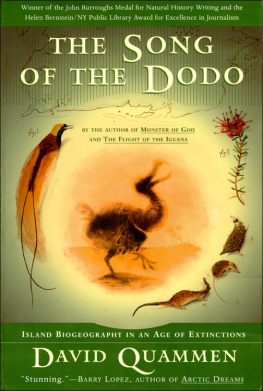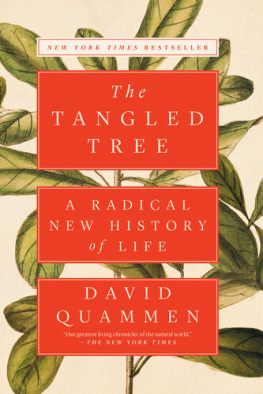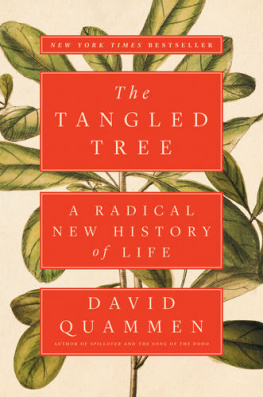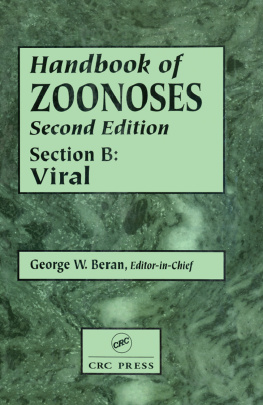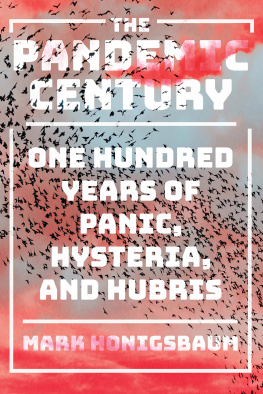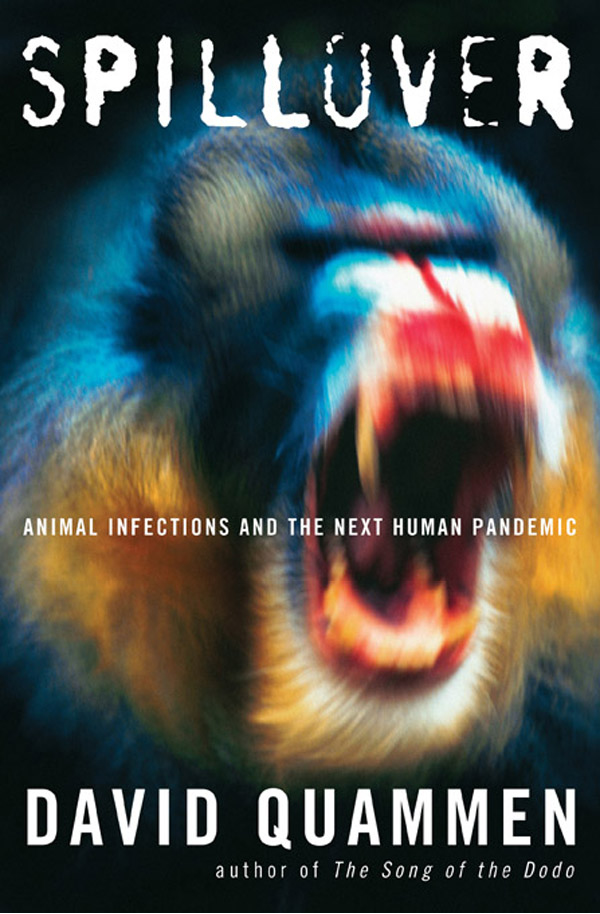
ALSO BY DAVID QUAMMEN
NONFICTION
The Reluctant Mr. Darwin
Monster of God
The Song of the Dodo
ESSAYS
Natural Acts
The Boilerplate Rhino
Wild Thoughts from Wild Places
The Flight of the Iguana
FICTION
Blood Line
The Soul of Viktor Tronko
The Zolta Configuration
To Walk the Line
EDITED
On the Origin of Species by Charles Darwin: The Illustrated Edition
The Best American Science and Nature Writing 2000, with Burkhard Bilger
SPILLOVER
Animal Infections and the
Next Human Pandemic
DAVID QUAMMEN

W. W. NORTON & COMPANY
NEW YORK LONDON
again and ever,
to Betsy
And I looked, and behold a pale horse: and his name that sat on him was Death, and Hell followed with him. And power was given unto them over the fourth part of the earth, to kill with sword, and with hunger, and with death, and with the beasts of the earth.
REVELATION 6:8
CONTENTS
I
PALE HORSE
T he virus now known as Hendra wasnt the first of the scary new bugs. It wasnt the worst. Compared to some others, it seems relatively minor. Its mortal impact, in numerical terms, was small at the start and has remained small; its geographical scope was narrowly local and later episodes havent carried it much more widely. It made its debut near Brisbane, Australia, in 1994. Initially there were two cases, only one of them fatal. No, wait, correction: There were two human cases, one human fatality. Other victims suffered and died too, more than a dozenequine victimsand their story is part of this story. The subject of animal disease and the subject of human disease are, as well see, strands of one braided cord.
The original emergence of Hendra virus didnt seem very dire or newsworthy unless you happened to live in eastern Australia. It couldnt match an earthquake, a war, a schoolboy gun massacre, a tsunami. But it was peculiar. It was spooky. Slightly better known now, at least among disease scientists and Australians, and therefore slightly less spooky, Hendra virus still seems peculiar. Its a paradoxical thing: marginal, sporadic, but in some larger sense representative. For exactly that reason, it marks a good point from which to begin toward understanding the emergence of certain virulent new realities on this planetrealities that include the death of more than 30 million people since 1981. Those realities involve a phenomenon called zoonosis.
A zoonosis is an animal infection transmissible to humans. There are more such diseases than you might expect. AIDS is one. Influenza is a whole category of others. Pondering them as a group tends to reaffirm the old Darwinian truth (the darkest of his truths, well known and persistently forgotten) that humanity is a kind of animal, inextricably connected with other animals: in origin and in descent, in sickness and in health. Pondering them individuallyfor starters, this relatively obscure case from Australiaprovides a salubrious reminder that everything, including pestilence, comes from somewhere.
I n September 1994, a violent distress erupted among horses in a suburb at the north fringe of Brisbane. These were thoroughbred racehorses, pampered and sleek animals bred to run. The place itself was called Hendra. It was a quiet old neighborhood filled with racecourses, racing people, weatherboard houses whose backyards had been converted to stables, newsstands that sold tip sheets, corner cafes with names like The Feed Bin. The first victim was a bay mare named Drama Series, retired from racing and now heavily in foalthat is, pregnant and well along. Drama Series started showing signs of trouble in a spelling paddock, a ragged meadow several miles southeast of Hendra, where racehorses were sent to rest between outings. She had been placed there as a brood mare and would have stayed until late in her pregnancy, if she hadnt gotten sick. There was nothing drastically wrong with herso it seemed, at this point. She just didnt look good, and her trainer thought she should come in. The trainer was a savvy little man named Vic Rail, with a forceful charm, swept-back brown hair, and a reputation for sharp practice in the local racing world. He was tough as nails, but a lovable rogue, Vickie was, by one judgment. Some people resented him but no one denied he knew horses.
It was Rails girlfriend, Lisa Symons, who took a horse trailer out to collect Drama Series. The mare was reluctant to move. She seemed to have sore feet. There were swellings around her lips, her eyelids, her jaw. Back at Rails modest stable in Hendra, Drama Series sweated profusely and remained sluggish. Hoping to nourish her and save the foal, he tried to force feed her with grated carrot and molasses but she wouldnt eat. After the attempt, Vic Rail washed his hands and his arms, though in hindsight perhaps not thoroughly enough.
That was September 7, 1994, a Wednesday. Rail called his veterinarian, a tall man named Peter Reid, sober and professional, who came and looked the mare over. She was now in her own box at the stable, a cinderblock stall with a floor of sand, close amid Rails other horses. Dr. Reid saw no discharges from her nose or eyes, and no signs of pain, but she seemed a pale image of her robust former self. Depressed, was his word, meaning (in veterinary parlance) a physical not a psychological condition. Her temperature and her heart rate were both high. Reid noticed the facial swelling. Opening her mouth to examine her gums, he noticed remnants of the carrot shreds that she hadnt bothered or been able to swallow, and he gave her injections of antibiotic and analgesic. Then he went home. Sometime after four the next morning, he got a call. Drama Series had gotten out of her stall, collapsed in the yard, and was dying.
By the time Reid rushed back to the stables, she was dead. It had been quick and ugly. Growing agitated as her condition got worse, she had staggered out while the stall door was open, fallen down several times, gouged her leg to the bone, stood up, fallen again in the front yard, and been pinned to the ground for her own protection by a stable hand. She freed herself desperately, crashed into a pile of bricks, and then was pinned again by joint effort of the stable hand and Rail, who wiped a frothy discharge away from her nostrilstrying to help her breathejust before she died. Reid inspected the body, noticing a trace of clear froth still at the nostrils, but did not perform a necropsy because Vic Rail couldnt afford to be so curious and, more generally, because no one foresaw a disease emergency in which every bit of such data would be crucial. Drama Seriess carcass was unceremoniously carted away, by the usual contract hauler, to the dump where dead Brisbane horses routinely go.
Her cause of death remained uncertain. Had she been bitten by a snake? Had she eaten some poisonous weeds out in that scrubby, derelict meadow? Those hypotheses crumbled abruptly, thirteen days later, when her stable mates began falling ill. They went down like dominoes. This wasnt snakebite or toxic fodder. It was something contagious.
The other horses suffered fever, respiratory distress, bloodshot eyes, spasms, and clumsiness; in some, bloody froth surged from the nostrils and mouth; a few had facial swelling. Reid found one horse frantically rinsing its mouth in a water bucket. Another banged its head against the concrete wall as though maddened. Despite heroic efforts by Reid and others, twelve more animals died within the next several days, either expiring horrifically or euthanized. Reid later said that the speed with which it went through those horses was unbelievable, but in these early moments no one had identified it. Something went through those horses. At the height of the crisis, seven animals succumbed to their agonies or required euthanasia within just twelve hours. Seven dead horses in twelve hoursthats carnage, even for a casehardened veterinarian. One of them, a mare named Celestial Charm, died thrashing and gasping so desperately that Reid couldnt get close enough to give her the merciful needle. Another horse, a five-year-old gelding, had been sent from Rails place to another spelling paddock up north, where it was sick on arrival and soon had to be put down. A vet up there necropsied the gelding and found hemorrhages throughout its organs. And in a neighbors stable on the corner beside Rails place in Hendra, at the same time, still another gelding went afoul with similar clinical signs and also had to be euthanized.
Next page

